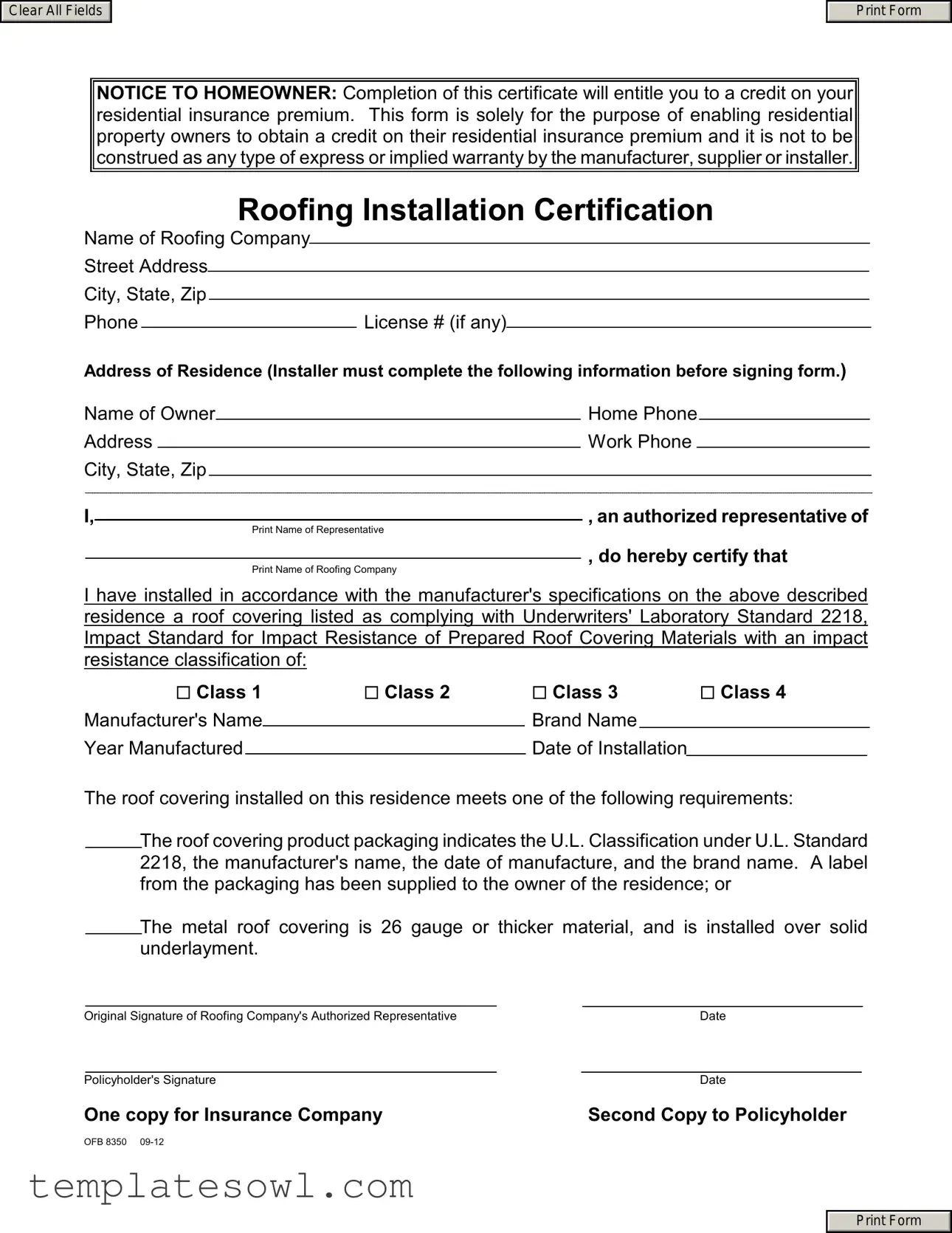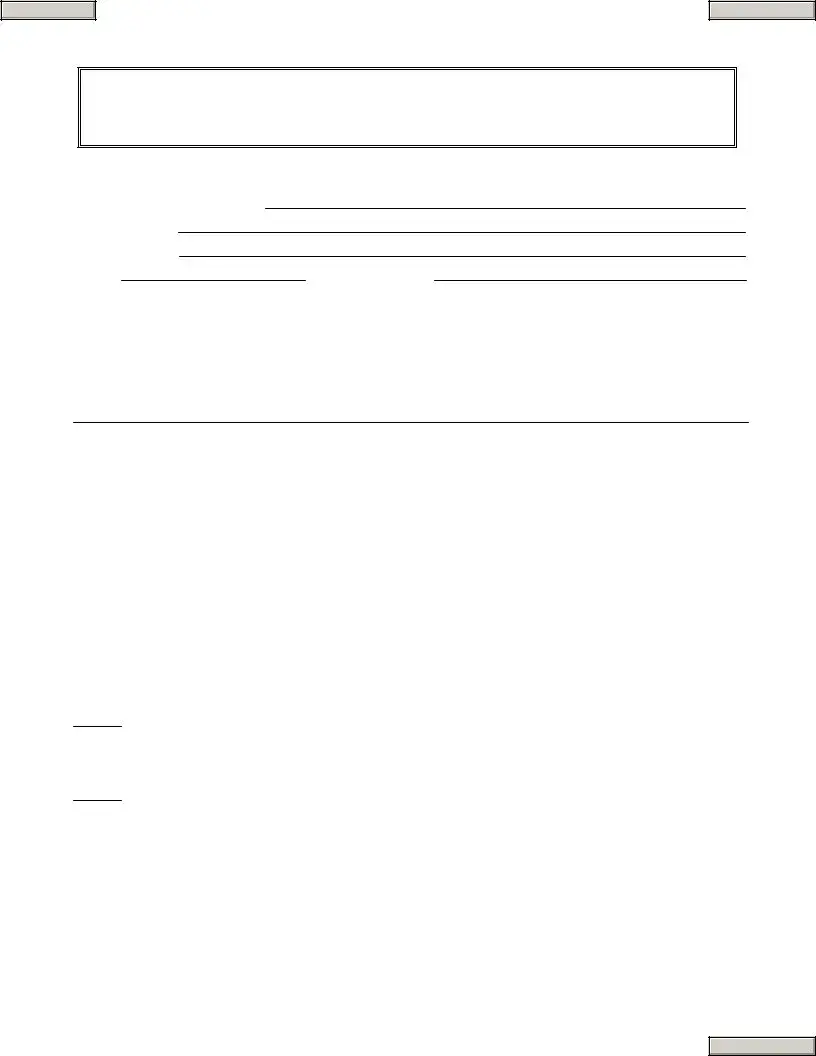Many homeowners find the Roofing Installation Certification form confusing, leading to common mistakes that can delay their insurance credits. Understanding these pitfalls can help ensure that the process goes smoothly. Here are seven frequent errors people make when filling out this important document.
Firstly, one of the most common mistakes is failing to complete all fields required. Each section of the form has specific information that must be filled out. Leaving any areas blank can cause delays in processing your application. Ensure that all required fields, including the street address of the roofing company and the address of the residence, are thoroughly completed.
Secondly, some homeowners neglect to include the license number of the roofing company. If the company is licensed, this information is essential to validate the installation and ensure compliance with local regulations. Missing this detail can hinder the certification approval process.
Another mistake often made involves the selection of the impact resistance classification. Homeowners might overlook specifically marking the appropriate classification box (Class 1, 2, 3, or 4). It's crucial to indicate this accurately because it directly relates to the insurance premium credit. An incorrect or missing selection may lead to complications later on.
Additionally, homeowners sometimes forget to provide the manufacturer's name and brand name of the roofing material used. This information is vital because it confirms that the materials meet the necessary standards. Without it, the insurer might question the legitimacy of the installation.
Many people also fail to attach necessary documentation, like a label from the packaging that indicates compliance with Underwriters' Laboratory (U.L.) standards. If the required label or proof of compliance isn’t provided, it can result in denial of the credit. Always check to ensure this documentation is secured before submitting the form.
Moreover, the signature section can also present challenges. Homeowners sometimes forget that both the authorized representative of the roofing company and the policyholder must sign the form. This step is critical. Without both signatures, the form remains incomplete and is therefore invalid.
Lastly, some individuals overlook the importance of making copies of the completed form. It is advisable to keep one copy for personal records and another for the insurance company. Not having a copy can make it difficult to follow up or provide evidence of submission if needed.
By being aware of these common mistakes, homeowners can navigate the Roofing Installation Certification form more efficiently, ensuring they receive the credits they deserve on their insurance premiums.

